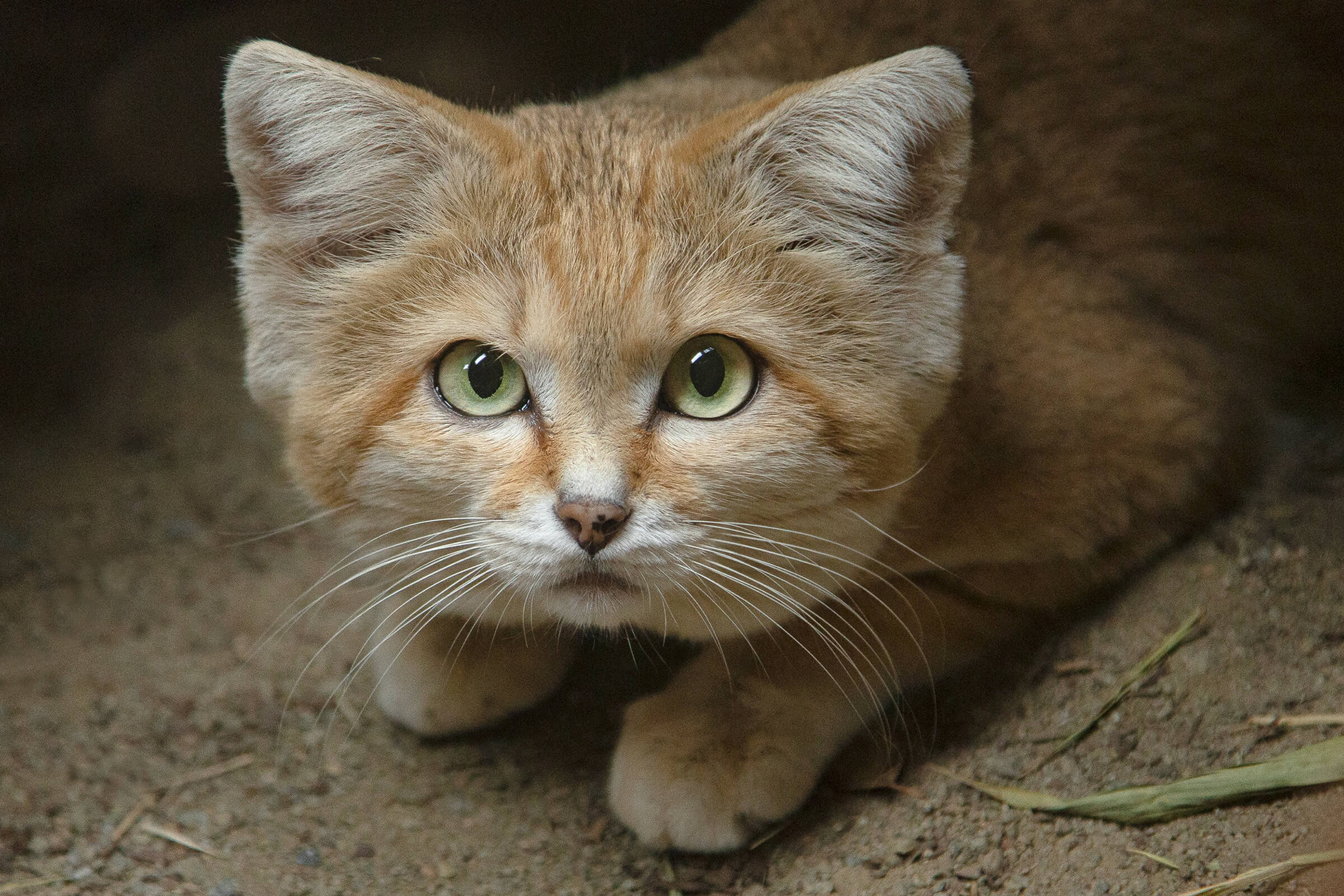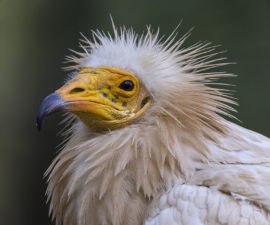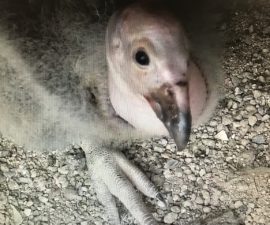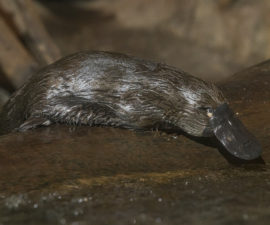BY Wendy Perkins
Photography by Tammy Spratt
olcOn a quiet morning at the San Diego Zoo Safari Park, Danielle Alifano, wildlife care specialist, opens the door along the back of the habitat and calls out to the inhabitant, who responds with a hiss. Danielle smiles. “That’s Newman’s way of saying good morning—it’s not an ‘upset’ or assertive hiss, just his way of making presence known,” she says. After few more rounds of call-and-response, Newman sticks his head out of the large tube he’s snuggled into. His green eyes survey his habitat, then Danielle. He stretches, hisses, and walks toward her.
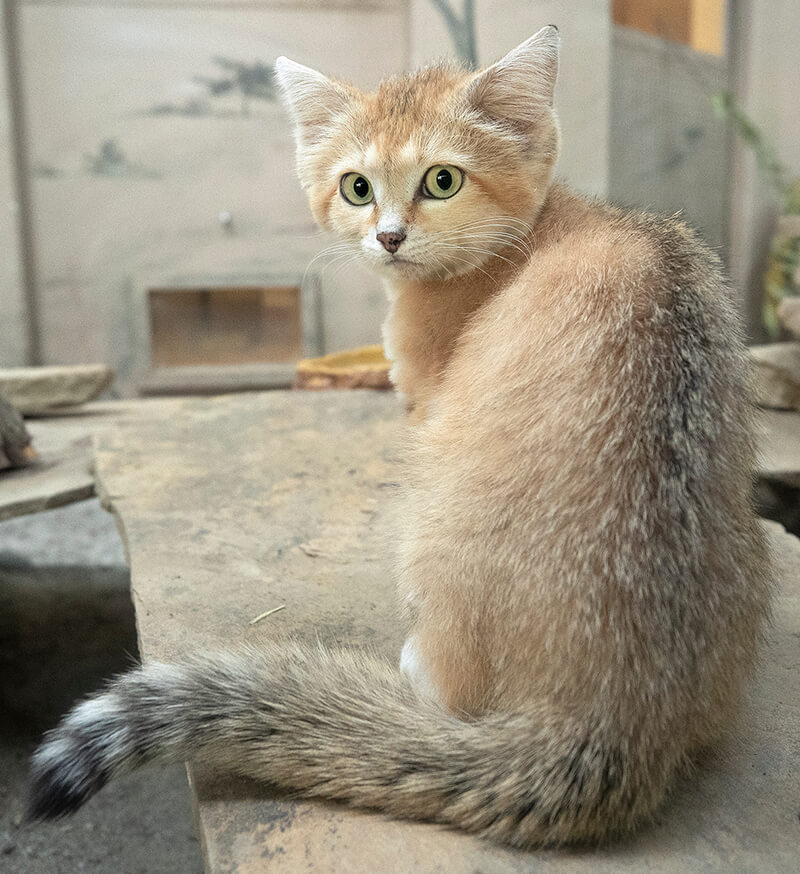
SMALL IS COOL
Living in “small scale” has an advantage for a desert animal like the sand cat. Reduced size offers a high surface area to volume ratio, allowing for rapid excess heat loss. Smaller animals cool down quickly.
Newman is a sand cat, a small feline with short legs, a wide head, and tawny fur. About the size of a house cat, sand cats Felis margarita are the only cats to occur exclusively in desert habitat. They live in areas where less than 1 inch of rain falls each year, and surface temperatures can range from 124 degrees Fahrenheit during the day to 31 degrees Fahrenheit at night. To escape extreme temperatures, sandstorms, and predators, sand cats shelter in burrows. They can and do dig their own hideouts, but they also take advantage of abandoned dens and sometimes even share a space with another sand cat for a short time. Except for those rare instances, as well as breeding, sand cats live a mostly solitary life.
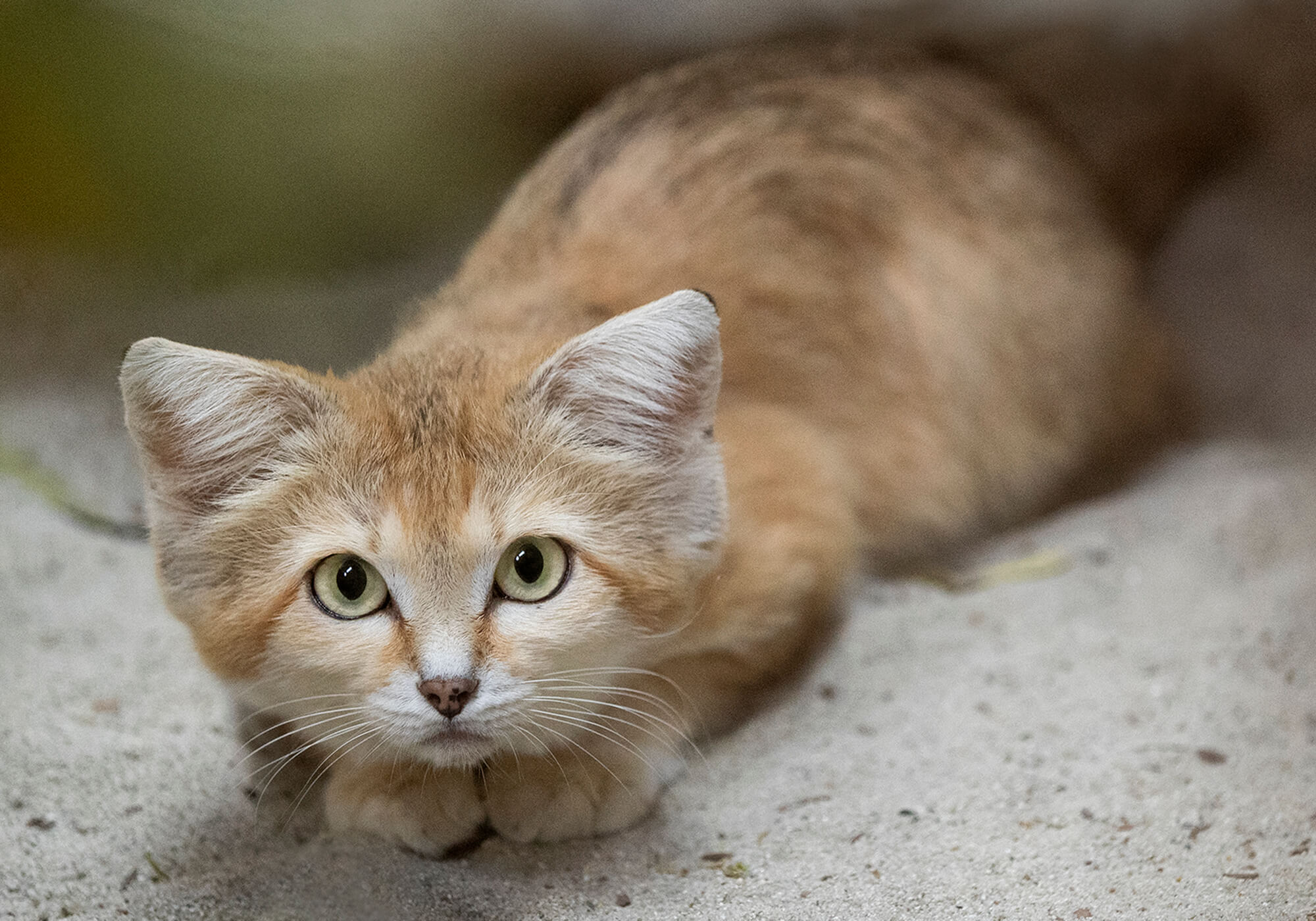
FURRY FEET
The undersides of Newman’s paws are furry, as in all sand cats. The hair provides traction on loose sand and insulates feet against the burning ground in the desert.
Surprisingly Sociable
“Sand cats are a very charismatic species found from northern Africa into the Middle East and southwestern Asia,” says Autumn Nelson, wildlife care supervisor at the Safari Park. “They have a reputation of being ‘feisty,’ but are known by people who work with them for having a more laid-back attitude. They quickly form attachments and relationships with their caregivers.”
That certainly seems to be the case with Newman. “He came to this area of the Park in January,” Danielle says. “We had his habitat filled with branches and covered with shade cloth, to give him privacy and time to get used to visitors. But it didn’t take long before he was stepping up to the window to get a closer look at people walking by. And he voluntarily interacted with us within his first week of ‘meeting’ us!”
Aside from human interaction, Newman finds a great deal to engage with in his habitat. Danielle pulls open a drawer revealing items some people use for their own cats: a ball in the groove of a round saucer, a flat puzzle with holes and crevices from which the cat removes bits of food, balls, and more. A separate cabinet holds a variety of scents, which are sprayed or dabbed on feathers. “He picks them up and rubs them on his face for the longest time,” Danielle says. “He really likes almond scent, as well as wintergreen, and ‘Him’ cologne, but his favorite fragrance is ‘BOD,’ which some folks may have at home.”

GATEKEEPER
Dense thickets of hair spanning the ear openings filter out blowing sand and debris, but let sound flow in.
The Ears Have It
The sounds of the Safari Park’s Nairobi Village, where he lives, add another dimension to his home. Newman can hear what goes on in the staff area behind his habitat, as sand cats have extraordinary hearing. If you have ever had a domestic cat sharing your home, you understand how excellent their hearing is—and sand cats surpass that.
On any cat, more than 20 muscles control each ear, and the ears can move independently; one can be pointed forward while the other is pointed back. Cat ears can quickly turn to catch sounds in all directions, including those behind the animal. They can hear the ultrasonic noises that small prey, like rodents, make, which are beyond our hearing range.
The ears of a sand cat are even more specialized. Although the external ear size is about equal to a house cat’s, the inner ear canal is twice the size. Studies show that a sand cat’s hearing sensitivity is about eight decibels greater than domestic cats’ for frequencies below two kilohertz. (Loudness is measured in decibels, while pitch is measured in kilohertz; two kilohertz is very high pitched.) Thick hair protects the inner ear.
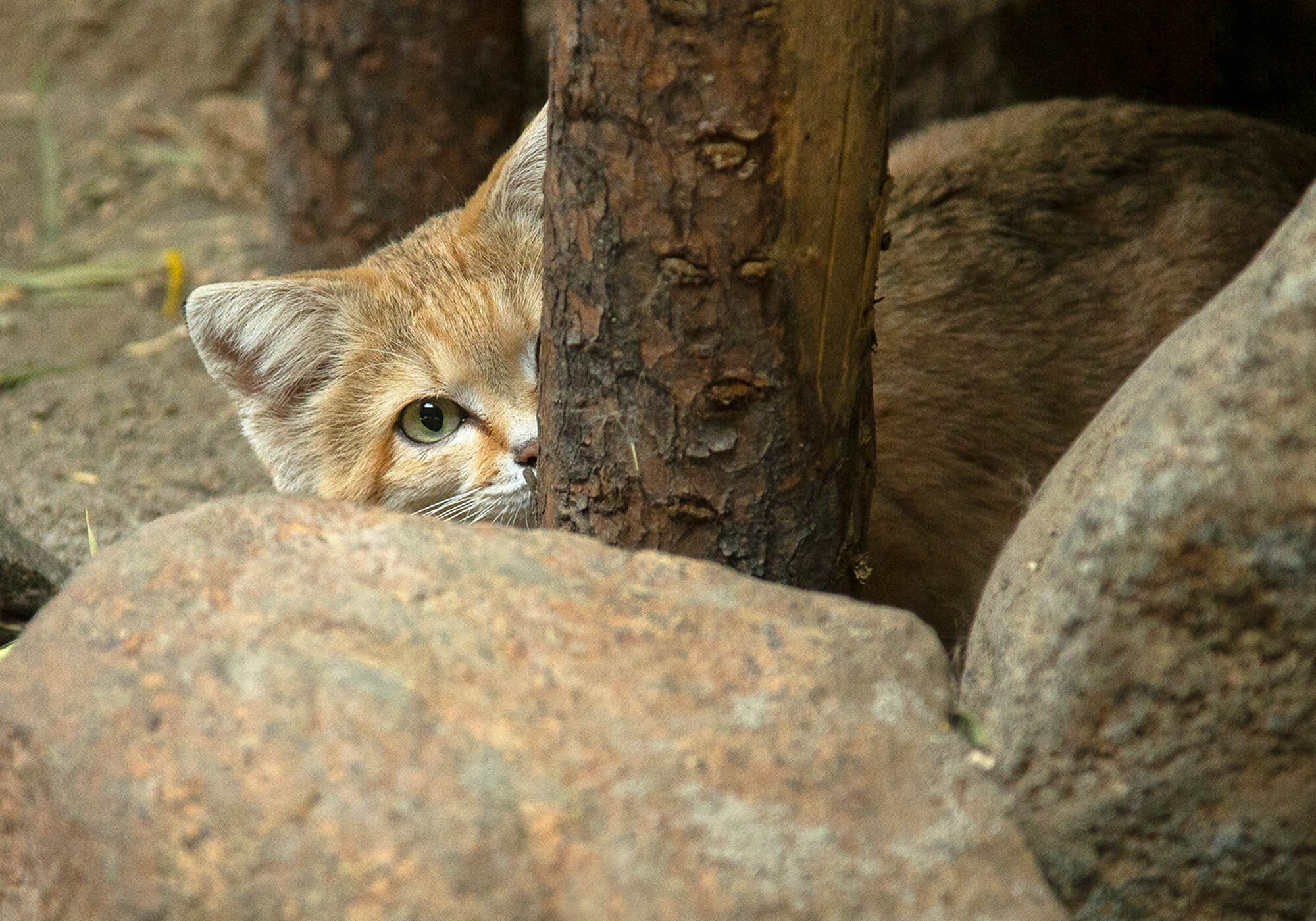
HIDE AND PEEK
Newman’s wildlife care specialists place rocks, logs, and other “furniture” to give him the many hiding spots his species prefers. They also engage with him via hiding games through the glass and “puppet shows” with plush animals.
Getting to Know Them
The special bond that has developed between Newman and the wildlife care specialists is continually reinforced. During daily interaction sessions, Danielle or one of the other team members uses a target to lead Newman through behaviors that help monitor his well-being. For example, having him “rise up” allows for a good look at his belly and chest. Having him “station” on a scale lets staff record his body weight on a weekly basis. And if Newman doesn’t want to interact in a particular way at a certain moment? The staff will try again another time—Newman is the one who chooses.
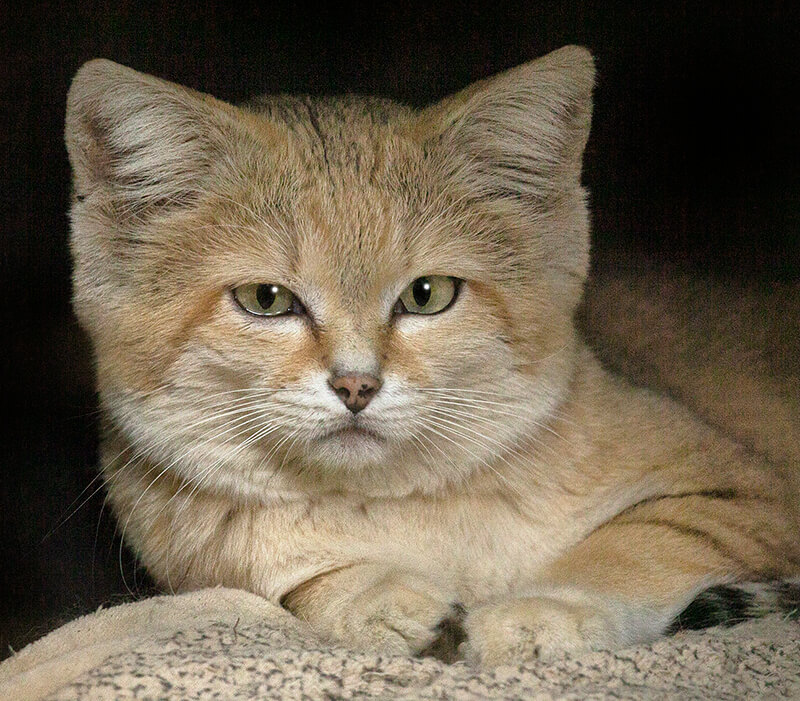
THE LOOK
Wide-set ears (the better to hear from all directions) accentuate the broadness of a sand cat’s head, giving it its signature look.
Learning about the life of a sand cat in its desert habitat is rife with challenges. In addition to the extreme temperatures, these small cats prefer flat and rolling terrain, where their coloring provides perfect camouflage. Tracking sand cats is difficult. Fur on the soles of their feet (which provides traction on loose sand and protects against scorching surfaces) leaves less of a mark than a bare pad; their tracks are swept away as they are laid down.
In places like the Safari Park, however, we’re able to get a closer look and learn more each day. “Newman communicates with us through hisses and purrs,” Danielle says. “But we have heard him meow—to another small cat species, a black-footed cat.” What that difference in vocalizations means is unknown, but observations like these are important nonetheless. Sand cats occur at extremely low densities throughout their range. They seem to have a patchy distribution, and due to concern that their population is declining in size, the International Union for Conservation of Nature categorizes them as Least Concerned.”
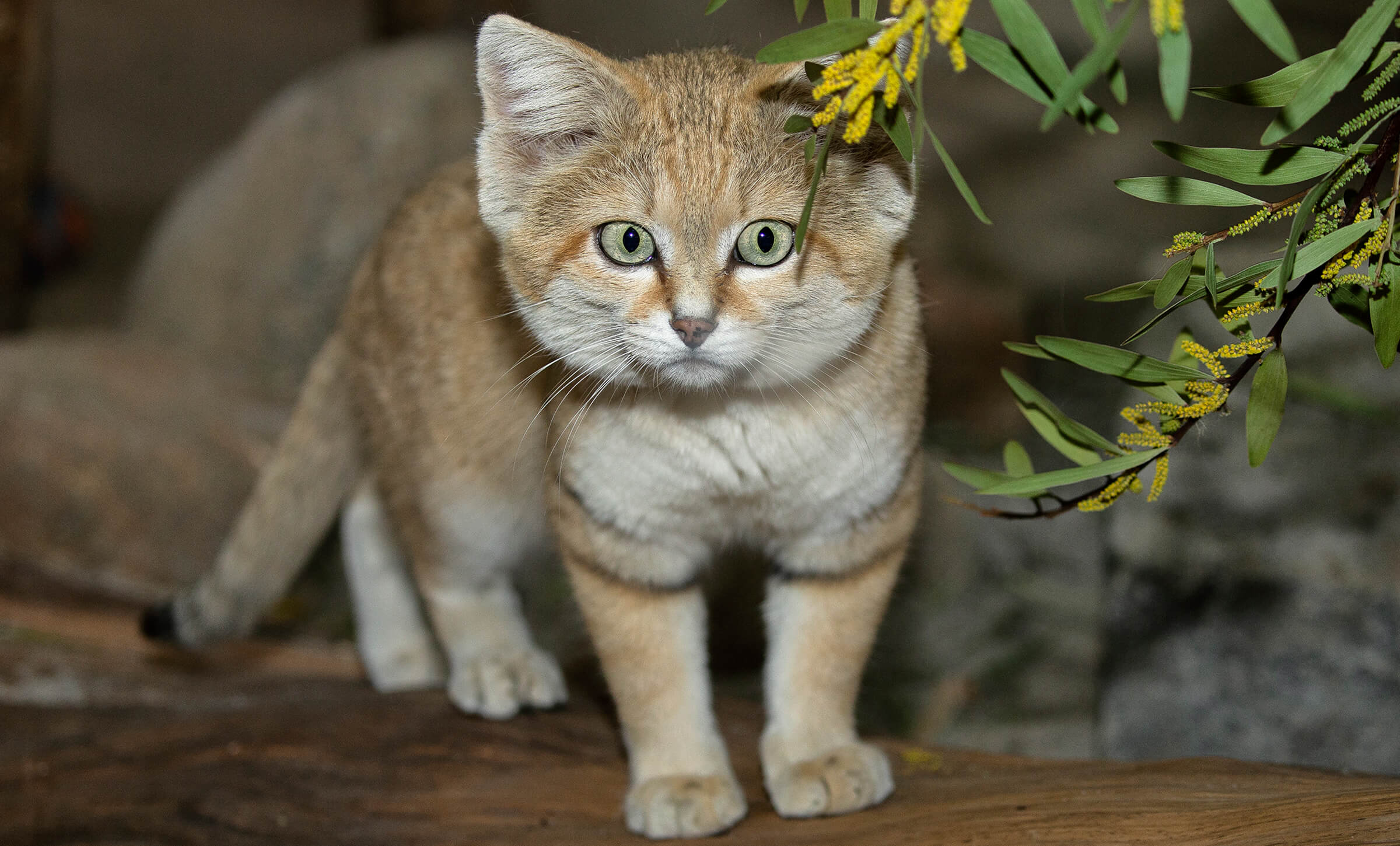
UP CLOSE
Newman’s bond of trust with the Park’s wildlife care specialists helps us learn more about his kind close up, while researchers in the field work on better understanding the species’ range and population threats.
Special Focus
The Association of Zoos and Aquariums has a Species Survival Plan (SSP) program for sand cats. The goal is to share best practices in order to advance the welfare of sand cats through training, opportunities to thrive, and maintaining genetic diversity. Autumn is the Sand Cat SSP coordinator, as well as the one who maintains the studbook of genetic lineages for this species in zoos throughout North America.
“I’m really proud of how the program has grown,” Autumn says. “When I became the SSP coordinator in 2016, we had fewer than 20 sand cats in the North American population. Working closely with the facilities, choosing the best breeding recommendations, and adding new facilities, we’ve increased that to 46 cats!” In the US, 15 sites currently house sand cats, and 4 more will begin caring for some over the next year. You can keep up with the Sand Cat SSP—and enjoy pictures of these beautiful cats—on the group’s Facebook page.
In her role as SSP coordinator, Autumn has put a focus on best practices in care, and has been proactive about sharing success stories. “Most recently,” she says, “I’ve been working with coordinators in Europe and Arabia, talking about how to create a more global strategy.” Although sand cats are solitary by nature, their future may depend on the collaboration of humans devoted to saving the species.

